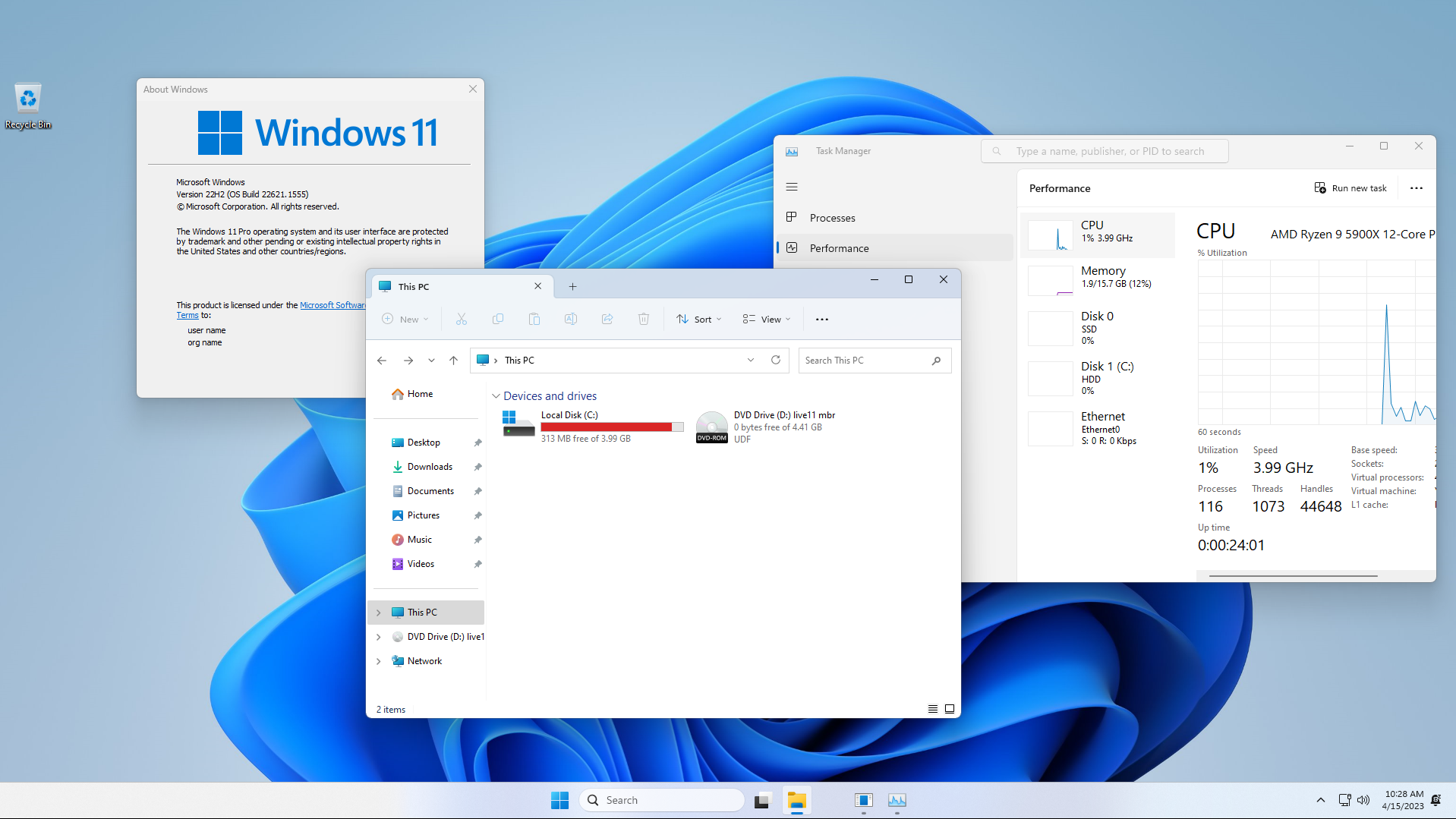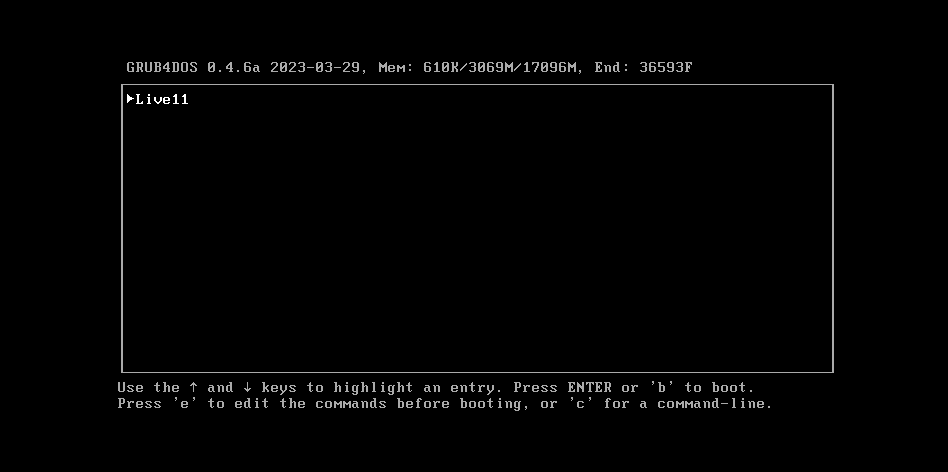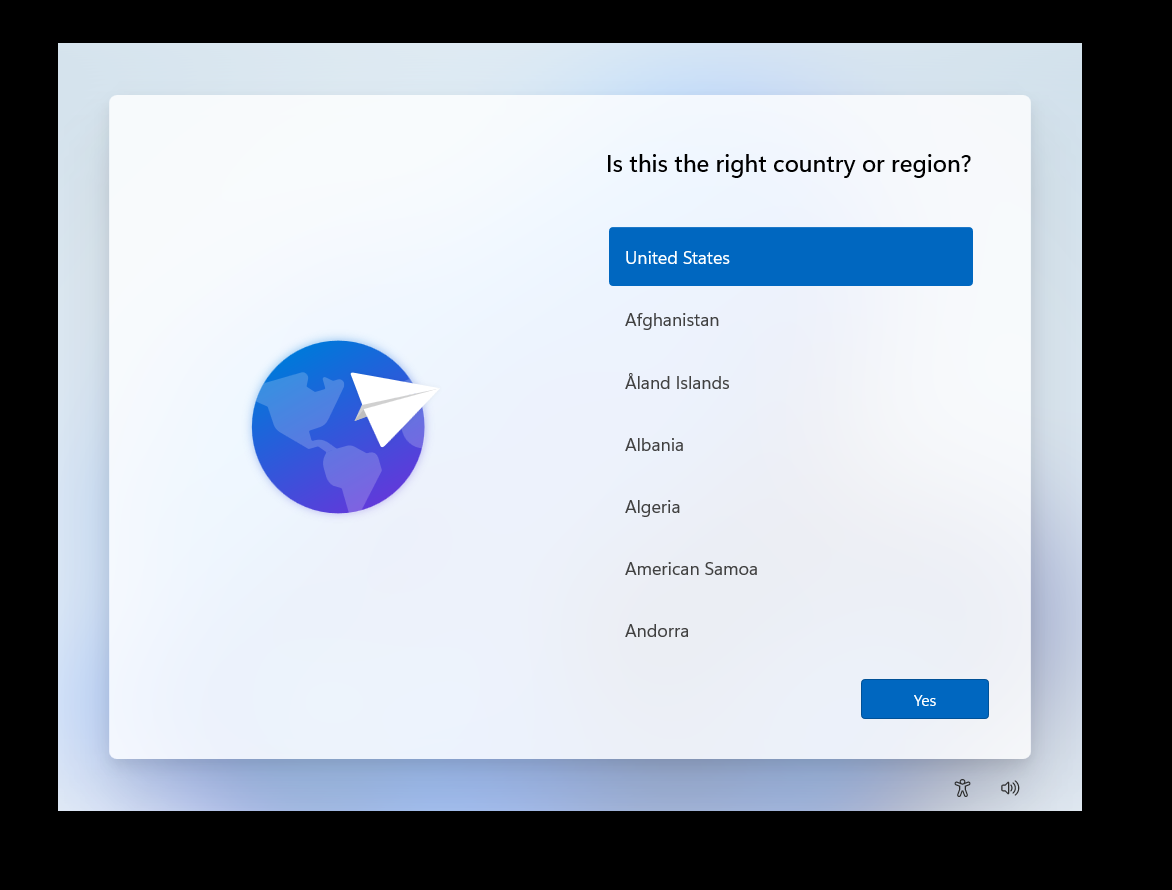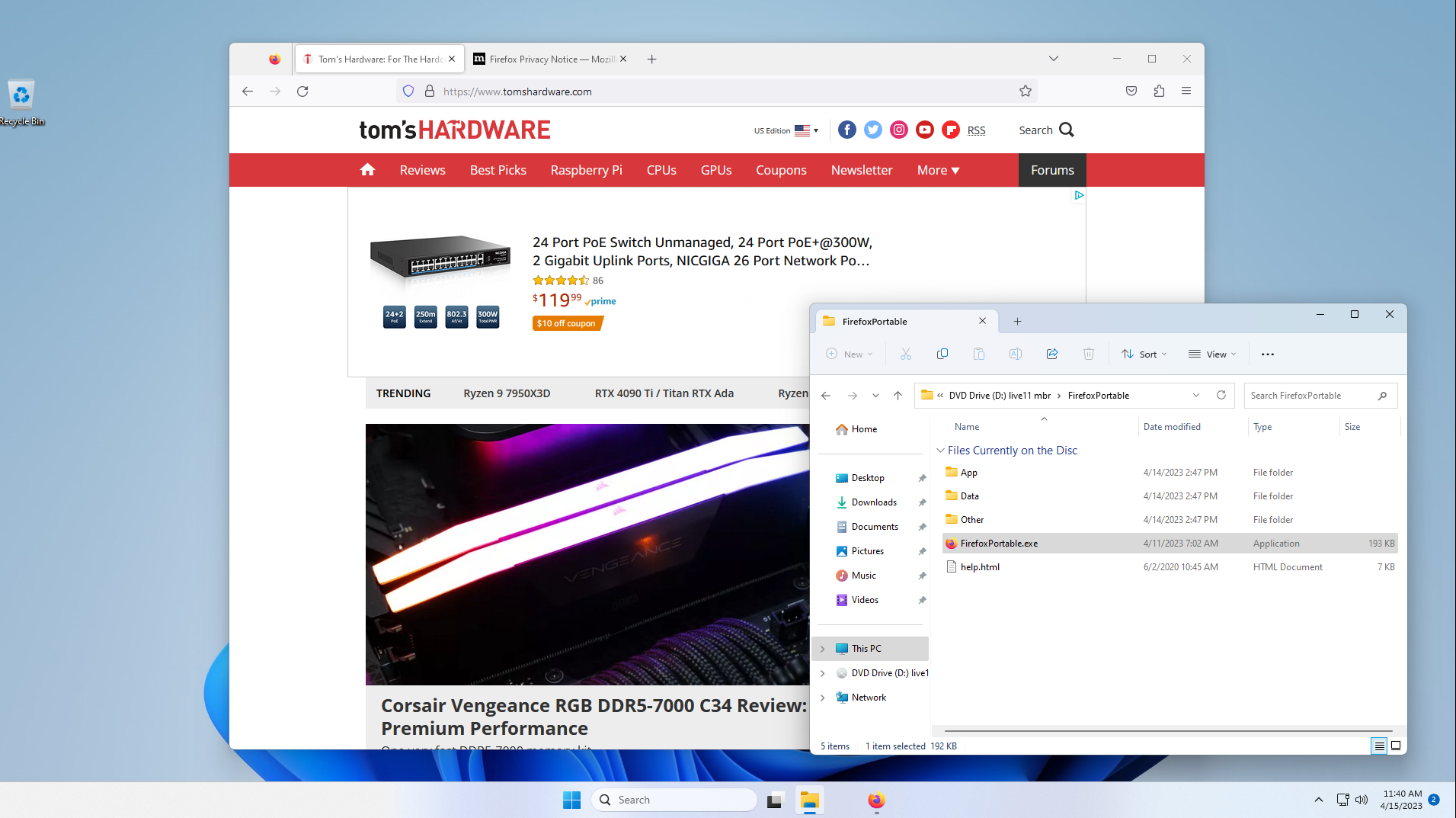
Some us remember a time when every operating system booted off of a floppy disk. However, for decades now, almost every computer stores its OS on an internal drive such as a hard drive or SSD. But what if you just want to try out Windows 11 on your computer, without actually installing it? Enter Live11, which has just been made available for download, and runs Windows 11 Pro, without writing a single file to disk.
Live11 is a new lightweight Windows 11 live disk from NTDEV, the developer behind Tiny11. After downloading the image that NTDEV has posted to the Internet Archive, you can write to a USB Flash Drive, a microSD card or even, if you still have an optical drive, a DVD-R. In fact, NTDEV deliberately got the disk image down to 4.4GB, which fits within a DVD's 4.7GB capacity.
Live disks, also known as live DVDs or live CDs, have been common in the Linux world for a while, where they have been used to let users try out a Linux flavor before deciding whether or not they want to install it. However, running a Windows 11 live disk is more interesting than useful.
You can use Live11 to see the Windows 11 UI on a PC that you're considering upgrading from Windows 10, but it's not a very realistic simulation of what it would be like to run the OS for real. As it's a stripped down version of Windows 11, it's going to use less resources than a real installation. Also, it can't save settings or permanently install apps, because it doesn't actually write to disk. If you want a persistent version of Windows that you can put on a USB Flash drive, see our tutorial on how to create a portable Windows 11 disk.
Hands on with Live11
To see what Live11 is like, I downloaded the ISO and booted it in a virtual machine, using VMWare Workstation 16. According to NTDEV, you can run Live11 in a variety of virtual machines or boot a whole computer from it, but it won't run on Oracle VirtualBox. It requires no disk space at all, but you will need at least 8GB of RAM. You do not need TPM or a Microsoft account, both of which are normally Windows 11 system requirements.
The first thing I noticed is that Live11 uses the Grub4DOS boot manager, which gives you only one choice Live11.

Live11 then makes you go through a somewhat shortened version of the Windows 11 installation process every single time you boot it. It first asks you which country you're in, which keyboard you want and then which privacy settings you wish to turn on. It then checks for updates and makes you wait a minute or two while it "installs." NTDEV told us that they deliberately made the installation questions part of the boot process so that users would know that this is an unmodified version of Windows 11.

Live11 is a read-only experience, even if you put it on a rewriteable USB Flash drive. It actually installs itself into a 3.99GB RAM disk, which has 319MB of free space you can use for data during your session, but it may get filled up with temporary files. After the "install," I was presented with Windows 11 Pro's default desktop with the familiar blue flower wallpaper. I was automatically logged in with a local account under the username Administrator. The build of Windows 11 Pro in the ISO, at present, is 22621.1555.
There are only a few apps preloaded, including Notepad, Paint, the Snipping Tool and the Terminal. Microsoft Edge is not installed, but you can run a Portable version of Mozilla Firefox if you open it from the live disk. It's a shame that there's no browser preloaded as it's annoying to have to navigate to the disk to find the executable for Firefox and, every time you open it, it wants to ask you some installation questions such as whether you want to pin it to taskbar. You can ignore these prompts and just start browsing.

With no programs running, the OS only used 1.89GB of RAM (on top of the 4GB reserved by its RAM disk). It ran smoothly in my VM, which I had given 16GB of RAM and four CPU cores. I was able to access the local, 60GB SSD I had assigned to my VM, but I had to mount and format it first. Since this is considered local storage, anything I stored on it would remain for future sessions.
Considering that there's only about 300MB free on the C drive, if you download anything at all, you'll need to download it to a different drive. Even without any files downloaded, I found that my C drive was pretty much full, just from the act of running portable Firefox (which presumably used some virtual memory and maybe some cache space). I asked NTDEV if it's possible to make the RAM disk larger than 4GB and they said that it would be if I extracted the relevant VHM file from the Live11 ISO, expanded it and recreated the ISO.
NTDEV also told me that it comes with VM drivers preinstalled. So, though it launched at 1024 x 768 resolution, I was able to change it to up to 3840 x 2160 or even higher if I wanted. If you are using a real PC rather than a VM, your choice of resolutions will likely be different.
Overall, I was impressed with the speed of Live11 and how quickly and easily it opened the few apps it had. If you want to try it out, you can download the latest ISO and give it a shot. We should note, though, that this is not an officially supported Windows image and comes with no warranties or support.







